-
 Bitcoin
Bitcoin $115100
-2.99% -
 Ethereum
Ethereum $3642
-1.38% -
 XRP
XRP $3.027
-5.51% -
 Tether USDt
Tether USDt $1.000
-0.05% -
 BNB
BNB $763.4
-1.32% -
 Solana
Solana $177.2
-5.42% -
 USDC
USDC $0.9999
-0.02% -
 Dogecoin
Dogecoin $0.2247
-6.47% -
 TRON
TRON $0.3135
0.23% -
 Cardano
Cardano $0.7824
-4.46% -
 Hyperliquid
Hyperliquid $42.53
-0.97% -
 Stellar
Stellar $0.4096
-6.09% -
 Sui
Sui $3.662
-2.61% -
 Chainlink
Chainlink $17.63
-3.57% -
 Bitcoin Cash
Bitcoin Cash $536.3
2.94% -
 Hedera
Hedera $0.2450
0.34% -
 Avalanche
Avalanche $23.23
-3.15% -
 Litecoin
Litecoin $112.2
-1.23% -
 UNUS SED LEO
UNUS SED LEO $8.976
-0.30% -
 Shiba Inu
Shiba Inu $0.00001341
-2.72% -
 Toncoin
Toncoin $3.101
-2.44% -
 Ethena USDe
Ethena USDe $1.001
-0.05% -
 Uniswap
Uniswap $10.08
-1.97% -
 Polkadot
Polkadot $3.938
-2.77% -
 Monero
Monero $323.9
0.87% -
 Dai
Dai $0.9999
-0.02% -
 Bitget Token
Bitget Token $4.481
-1.69% -
 Pepe
Pepe $0.00001199
-5.94% -
 Aave
Aave $288.2
-0.68% -
 Cronos
Cronos $0.1279
0.36%
Bollinger band lower rail rebound + break through the middle rail to increase positions
A Bollinger Band rebound from the lower rail followed by a close above the middle rail signals potential bullish momentum, especially with volume and RSI confirmation.
Jul 24, 2025 at 09:14 pm
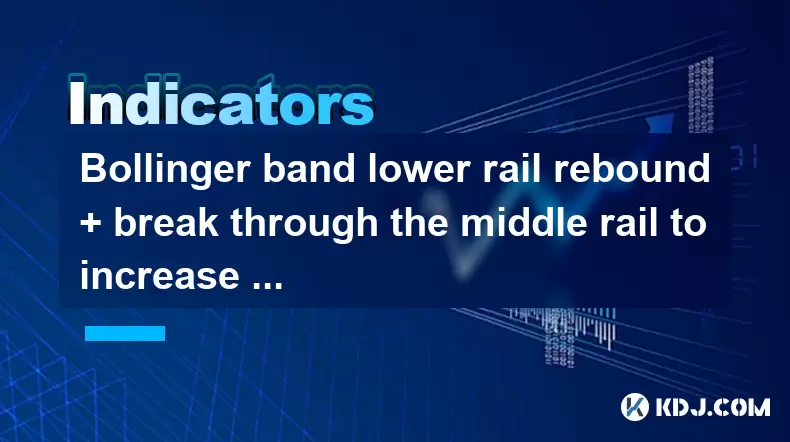
Understanding the Bollinger Bands Structure
Bollinger Bands are a widely used technical analysis tool in the cryptocurrency trading space. They consist of three lines: the middle rail, which is a simple moving average (SMA), typically over 20 periods; the upper rail, which is the SMA plus two standard deviations; and the lower rail, which is the SMA minus two standard deviations. These bands dynamically adjust based on market volatility. When volatility increases, the bands widen; when it decreases, they contract. The core principle behind Bollinger Bands is that prices tend to stay within the upper and lower bands under normal conditions. Traders interpret price touching or crossing these bands as potential signals of overbought or oversold conditions.
The middle rail acts as a dynamic support or resistance level. In uptrends, it often serves as support, while in downtrends, it may act as resistance. The interaction between price and the middle rail can offer insights into trend strength and potential reversals. When price moves from the lower rail toward the middle rail, it suggests a possible shift in momentum. This movement is especially significant when combined with volume analysis and other confirming indicators.
Interpreting Lower Rail Rebound Signals
A rebound from the lower rail indicates that the price has reached a level considered statistically low relative to recent volatility. In cryptocurrency markets, which are highly sensitive to sentiment and news, such rebounds can signal a temporary exhaustion of selling pressure. When the price touches or briefly dips below the lower rail and then moves upward, it may reflect a short-term bottom forming.
To validate this signal, traders should look for candlestick patterns such as bullish engulfing, hammer, or inverted hammer at the point of contact with the lower rail. These patterns suggest buyer interest emerging at lower levels. Volume confirmation is also critical. A noticeable increase in buying volume during the rebound strengthens the validity of the signal. Without volume support, the rebound may be a false move, leading to a continuation of the downtrend.
It's important to note that a lower rail touch alone is not sufficient to justify entering a trade. The broader context, including market structure, trend direction, and key support/resistance zones, must align. For instance, a rebound in a strong downtrend might only be a temporary pullback rather than a reversal.
Breakthrough of the Middle Rail as Confirmation
After a price rebound from the lower rail, the next critical level to monitor is the middle rail. A successful break above this moving average suggests that bullish momentum is building. This breakout acts as a confirmation that the initial rebound was not just a minor bounce but potentially the start of a stronger upward move.
For the breakout to be considered valid, the price should close above the middle rail, not just spike momentarily. A closing price above the middle rail indicates sustained buying pressure. Traders should also check for consecutive green candles following the breakout, which further confirms buyer dominance. Additionally, the slope of the middle rail matters. If the 20-period SMA is flattening or beginning to turn upward, it supports the idea of a potential trend change.
Another factor to consider is the distance between the lower and middle rails. A wide gap suggests high volatility and a stronger potential for a mean reversion move. Conversely, a narrow gap may indicate low volatility and a less reliable signal. Combining this observation with the Average True Range (ATR) can help assess volatility context.
Executing Position Increases Based on the Signal
Once both conditions are met — a confirmed rebound from the lower rail and a closing breakout above the middle rail — traders may consider increasing their long positions. This strategy is particularly effective in ranging or consolidating markets where Bollinger Bands perform best.
- Wait for the daily or 4-hour candle to close above the middle rail before acting. Intraday spikes can be misleading.
- Enter in stages rather than all at once. For example, open a partial position upon the first close above the middle rail, then add more if the price continues to rise and holds above the level.
- Set a stop-loss just below the recent swing low near the lower rail touch point. This protects against a false breakout.
- Use trailing stops if the position becomes profitable, allowing profits to run while protecting against reversals.
- Avoid increasing positions if the market is in a strong downtrend on a higher timeframe. This signal works best in sideways or mildly bullish contexts.
It's crucial to monitor on-chain data and funding rates in cryptocurrency markets. High long funding rates during a rebound could indicate overcrowded long positions, increasing the risk of a liquidation cascade.
Integrating Additional Confirmation Tools
While the Bollinger Band signal is powerful, it should not be used in isolation. Combining it with other tools increases reliability.
- RSI (Relative Strength Index): Look for RSI rising from below 30, indicating the asset is coming out of oversold territory.
- Volume Profile: Confirm that volume is higher on up-candles during the rebound and breakout.
- MACD (Moving Average Convergence Divergence): A bullish crossover around the same time adds confluence.
- Support Levels: Ensure the lower rail bounce coincides with a known horizontal support or Fibonacci level.
For example, if Bitcoin touches the lower Bollinger Band near a key psychological level like $60,000 and shows a hammer candle with rising volume and RSI turning up, the signal gains strength. A subsequent close above the middle rail would then justify a position increase.
Frequently Asked Questions
What timeframes work best for this Bollinger Band strategy?
The 4-hour and daily charts are most effective for this strategy. Shorter timeframes like 15-minute or 1-hour generate too many false signals due to market noise. The 4-hour chart balances signal quality and trade frequency, while the daily chart provides high-confidence setups suitable for swing trading.
Can this strategy be automated using trading bots?
Yes, trading bots can be programmed to detect lower rail touches and middle rail breakouts. Conditions include price closing below the lower band, followed by a close above the middle band, with optional filters like RSI > 30 and volume above average. However, bots may struggle with context, such as macro market conditions or news events, so manual oversight is recommended.
How do I adjust Bollinger Band settings for different cryptocurrencies?
The default 20-period, 2-standard deviation setting works well for major coins like Bitcoin and Ethereum. For more volatile altcoins, consider using a longer period (e.g., 25 or 30) to smooth the bands or adjusting deviations to 1.8 to reduce false signals. Always backtest changes on historical data before live trading.
Should I use leverage when increasing positions on this signal?
Leverage should be used cautiously. Given the volatile nature of crypto, limit leverage to 2x–3x when adding to positions. Higher leverage increases the risk of liquidation if the market retraces after the breakout. Always calculate position size based on stop-loss distance and account risk tolerance.
Disclaimer:info@kdj.com
The information provided is not trading advice. kdj.com does not assume any responsibility for any investments made based on the information provided in this article. Cryptocurrencies are highly volatile and it is highly recommended that you invest with caution after thorough research!
If you believe that the content used on this website infringes your copyright, please contact us immediately (info@kdj.com) and we will delete it promptly.
- BONK's Wild Ride: Selling Pressure and Market Dip - A New Yorker's Take
- 2025-07-26 03:30:12
- Pepeto Presale Heats Up: Demo Trading and Meme Coin Mania!
- 2025-07-26 02:50:11
- WeWake, Nexchain AI, and the Crypto Presale Frenzy: What You Need to Know
- 2025-07-26 02:50:11
- Scottie Pippen's XRP Moonshot: A Slam Dunk or an Air Ball?
- 2025-07-26 03:30:12
- BlockDAG: The Crypto Coin Revolutionizing Presale Mining
- 2025-07-26 03:35:12
- Nexchain: Your High-ROI Ticket to the Presale Crypto Revolution
- 2025-07-26 03:35:12
Related knowledge

What does it mean when the price breaks through the 30-day moving average and is accompanied by a large volume?
Jul 26,2025 at 03:35am
Understanding the 30-Day Moving Average in Cryptocurrency TradingThe 30-day moving average (MA) is a widely used technical indicator in the cryptocurr...

Does the golden cross of the KDJ three lines at the annual line level indicate a turning point in the big cycle?
Jul 26,2025 at 01:35am
Understanding the KDJ Indicator in Cryptocurrency TradingThe KDJ indicator is a momentum oscillator widely used in technical analysis, especially with...
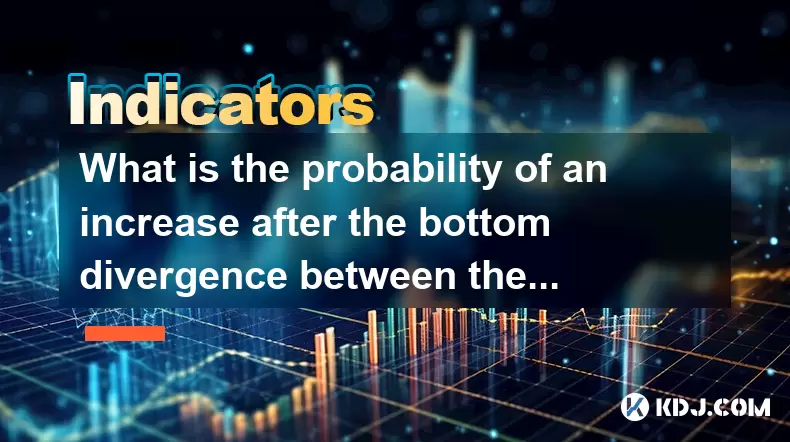
What is the probability of an increase after the bottom divergence between the KDJ indicator and the trading volume?
Jul 26,2025 at 01:29am
Understanding KDJ Indicator and Its Role in Technical AnalysisThe KDJ indicator is a momentum oscillator widely used in cryptocurrency trading to iden...
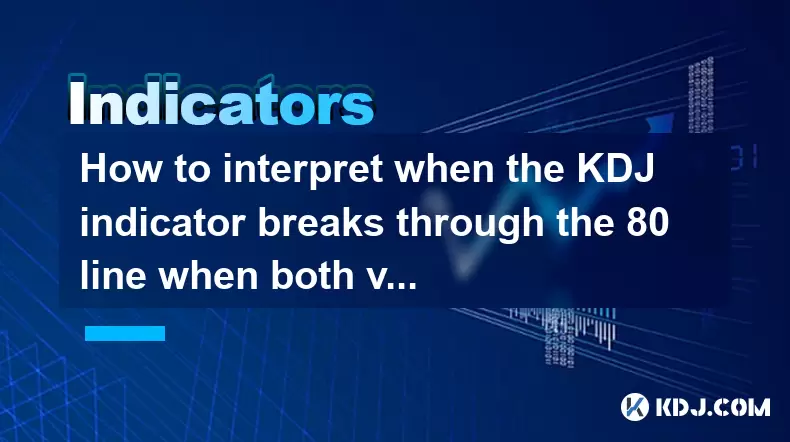
How to interpret when the KDJ indicator breaks through the 80 line when both volume and price rise?
Jul 26,2025 at 12:47am
Understanding the KDJ Indicator and Its ComponentsThe KDJ indicator is a momentum oscillator widely used in technical analysis within the cryptocurren...
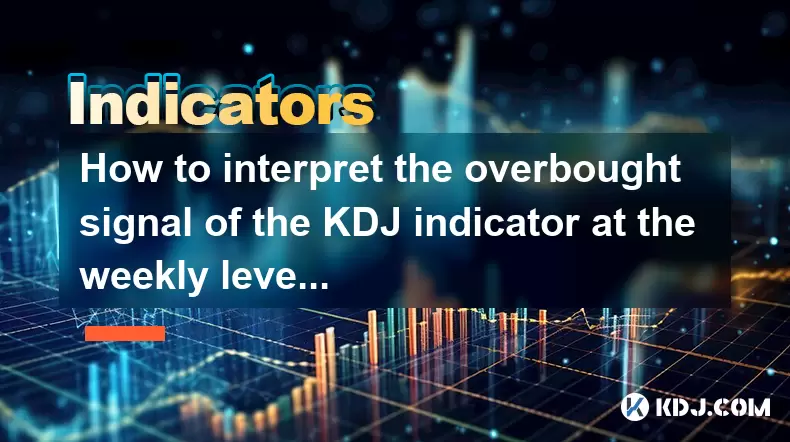
How to interpret the overbought signal of the KDJ indicator at the weekly level?
Jul 26,2025 at 04:09am
Understanding the KDJ Indicator at the Weekly LevelThe KDJ indicator is a momentum oscillator widely used in technical analysis to identify potential ...
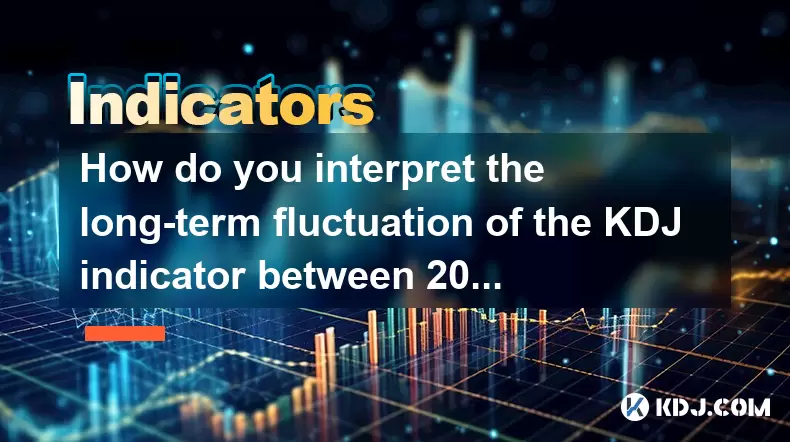
How do you interpret the long-term fluctuation of the KDJ indicator between 20-80?
Jul 26,2025 at 01:42am
Understanding the KDJ Indicator in Cryptocurrency TradingThe KDJ indicator is a momentum oscillator widely used in technical analysis, especially with...

What does it mean when the price breaks through the 30-day moving average and is accompanied by a large volume?
Jul 26,2025 at 03:35am
Understanding the 30-Day Moving Average in Cryptocurrency TradingThe 30-day moving average (MA) is a widely used technical indicator in the cryptocurr...

Does the golden cross of the KDJ three lines at the annual line level indicate a turning point in the big cycle?
Jul 26,2025 at 01:35am
Understanding the KDJ Indicator in Cryptocurrency TradingThe KDJ indicator is a momentum oscillator widely used in technical analysis, especially with...

What is the probability of an increase after the bottom divergence between the KDJ indicator and the trading volume?
Jul 26,2025 at 01:29am
Understanding KDJ Indicator and Its Role in Technical AnalysisThe KDJ indicator is a momentum oscillator widely used in cryptocurrency trading to iden...

How to interpret when the KDJ indicator breaks through the 80 line when both volume and price rise?
Jul 26,2025 at 12:47am
Understanding the KDJ Indicator and Its ComponentsThe KDJ indicator is a momentum oscillator widely used in technical analysis within the cryptocurren...

How to interpret the overbought signal of the KDJ indicator at the weekly level?
Jul 26,2025 at 04:09am
Understanding the KDJ Indicator at the Weekly LevelThe KDJ indicator is a momentum oscillator widely used in technical analysis to identify potential ...

How do you interpret the long-term fluctuation of the KDJ indicator between 20-80?
Jul 26,2025 at 01:42am
Understanding the KDJ Indicator in Cryptocurrency TradingThe KDJ indicator is a momentum oscillator widely used in technical analysis, especially with...
See all articles

























































































